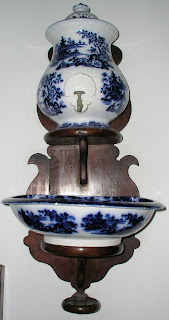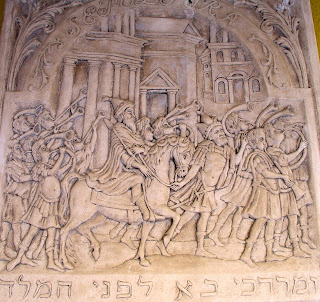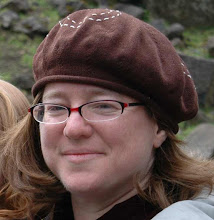
“When the Almighty speaks in such tremendous language, he must not speak in vain”
--Dr. Beilby Porteous, 1777
On the first of November 1755, an earthquake rocked and then destroyed the elegant port city of Lisbon, Portugal. At the time Lisbon was the fourth largest urban center in Europe, and the seismic wave sent physical and psychic reverberations throughout the continent: indeed, the quake is often referred to as the first “modern” disaster, as it rattled both religious and scientific understandings of the world (Braun and Radner 1; Dynes 34). As contemporary historians noted, on “that fatal morning the sky was serene, and there was perfect calm” before the fateful noise was heard. After ten minutes of three separate tremors, the city was in ruins. Whole buildings, including the customhouse, perished beneath the accompanying tidal waves. After the waters receded and the raging fires died out, the bodies were counted: at least 30,000 people were dead. Foreign traders alone lost about 48,000,000 Spanish dollars worth of goods (An Account 6-8; Kendrick 24, 32-34).
Both in Portugal and abroad, the disaster engendered a crisis of faith: in addition to forty parish churches and a magnificent cathedral, the city was home to twenty-five monasteries, eighteen nunneries, and one hundred and thirty laics. It was also home to recent waves of the inquisition: indeed one of the infamous sites destroyed by the earthquake was the Terreiro do Paço—the place where numerous descendents of Jewish converts had been executed during Lisbon’s
autos-da-fé. Throughout Europe, clerics such as the Bishop of Chester warned regarding earthquakes that, “When the Almighty speaks in such tremendous language, he must not speak in vain.” The problem, however, was knowing exactly what God was saying. In Protestant countries the answer was obvious, as Lisbon was well known for three sins: wealth, the inquisition, and the “superstitious and idolatrous cult of graven images.” Yet for Catholics, there was more contention about the exact nature of Lisbon’s offense; indeed, several clerics were either executed or burned in effigy for improperly interpreting the disaster. For Lisbon’s “New Christians,” the horror of their ruined lives was amplified by the terrible knowledge that previous Iberian earthquakes had been interpreted as a sign of God’s wrath for Portugal’s “leniency” towards Jewish converts. When an earthquake came, the inquisition was never far away (Dynes 42-44; Kendrick 1, 24, 29, 33, 34; Saraiva 110, 230; Birmingham 75-76).
Thus while the air may have appeared calm on November first, the cultural and theological crisis caused by Lisbon’s seismic boom was actually the apex of several decades of disturbance both in Lisbon and throughout Portugal. One of the “pre-shocks” to this event was the wave of
autos-da-fé (acts of faith) that surged across the Iberian Peninsula during periods of economic, social, and theological unrest. The early eighteenth century was one such era: between 1701 and 1739, there were ten
autos in Lisbon, and three in nearby Coimbra involving Jewish prisoners (Mocatta 104). Autos varied depending on place and time, but by the eighteenth-century in Lisbon, they were multi-day public denouncements of heretics that included feasts, processions, and executions. As one Inquisitor noted, the goal of the auto was to persuade the masses that “one of the causes of the evils and travails which this country has been experiencing for so many years is the glut of Jews that live among us” (Saraiva 109). It was rare that a public auto was comprised of fewer than 50 penanced and executed prisoners, and frequently more than 200 prisoners were involved in the spectacle.
Autos-da-fé were extremely popular with crowds, and numerous sermons and illustrations about
autos were distributed throughout Lisbon to help bolster support for the events (Saraiva 113). As historian António José Saraiva notes, Judaism was often a pretext, rather than a motivation for hostility embedded in these displays: “Jews were the ‘other’ upon whom grievances, dissatisfactions and frustrations might be deflected” (Saraiva 19).
Indeed despite its popularity as a spectacle, the
auto was ineffective in preventing Jewish practice. According to some conversos such as António Nunes Roberiro Sanches (1699-1783), the inquisition actually reinforced and sometimes created Jewish identity and practice in Portugal (Saraiva 124-25). Those imprisoned by the inquisition were largely New Christians, also known as
conversos or
marranos: that is, they were the descendents of Sephardic Jews forced to convert to Catholicism at the end of the fifteenth century. While over the centuries some
conversos and their descendents had practiced a form of crypto-Judaism in private, others left their Judaism behind as they embraced Catholicism and married into Old Christian families. Even if some of the New Christians tortured by the Inquisition had been secret “Judaizers,” many others were not: indeed, Saraiva has argued that the experience of the Inquisition actually instigated as much Judaizing as it suppressed (Saraiva ix). Many New Christians left Portugal during the eighteenth century to escape both the Inquisition and the destruction caused by Lisbon’s earthquake. They settled in places like Amsterdam, Hamburg, and London, but they also sought to remake their fortunes in the port towns throughout the colonies, particularly in Curaçao, Surinam, Barbados, Jamaica, New York, and Newport, Rhode Island. These cities became the port towns of the "Jewish Atlantic World."
Sources:
An account of the earthquake which destroyed the city of Lisbon, on the first of November, 1755. London: W. Glendinning, 1800.
Braun, Theodore E.D. and John B. Radner, eds. The Lisbon Earthquake of 1755: Representations and Reactions. Oxford: Voltaire Foundation, 2005.
Birmingham, David. A Concise History of Portugal, 2nd ed. Cambridge: Cambridge U P, 2003.
Dynes, Russell R. “The Lisbon Earthquake of 1755: the First Modern Disaster” The Lisbon Earthquake of 1755: Representations and Reactions. Eds. Theodore E.D. Braun and John B. Radner. Oxford: Voltaire Foundation, 2005. 34-49.
Kendrick, Thomas Downing. The Lisbon Earthquake. London: Methuen, 1956.
"Lisbon Earthquake" (1850) LIFE
Mocatta, Frederic David. The Jews of Spain and Portugal and the Inquisition. Supplementary Chronological Tables by David Bortin. New York: Cooper Square, 1973.
Porteous, Beilby. “A Letter to the Inhabitants of Manchester, Macclesfield, and adjacent parts, on occasion of the late earthquake in those places.” Foregate-street: J. Poole. 1777.
Saraiva, António José, H. P. Salomon, and I. S. D. Sassoon, The Marrano Factory: the Portuguese Inquisition and its New Christians 1536-1765. Leiden: Brill, 2001.
 In the 1730s-40s, Abigail Levy Franks (1696-1756) wrote a series of letters to her family. Like many letters, these range from mundane to heart wrenching: in the letter below to her son Naphtali, she wrote of her shock and despair on learning of her daughter's secret marriage to a non-Jew: "Good God Wath a Shock it was when they Acquanted me She had Left the House and Had bin Married Six months I can hardly hold my Pen whilst I am writting it. . . . My Spirits Was for Some time Soe Depresst that it was a pain for me to Speak or See Any one." These letters have been superbly collected and edited by Edith B. Gelles in The Letters of Abigaill Levy Franks, 1733-1748. A brief biography of Abigail Levy Franks is available online at the Center for Jewish History.
In the 1730s-40s, Abigail Levy Franks (1696-1756) wrote a series of letters to her family. Like many letters, these range from mundane to heart wrenching: in the letter below to her son Naphtali, she wrote of her shock and despair on learning of her daughter's secret marriage to a non-Jew: "Good God Wath a Shock it was when they Acquanted me She had Left the House and Had bin Married Six months I can hardly hold my Pen whilst I am writting it. . . . My Spirits Was for Some time Soe Depresst that it was a pain for me to Speak or See Any one." These letters have been superbly collected and edited by Edith B. Gelles in The Letters of Abigaill Levy Franks, 1733-1748. A brief biography of Abigail Levy Franks is available online at the Center for Jewish History.







































